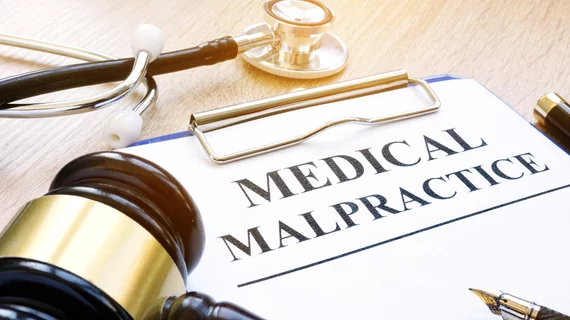Should emergency medicine malpractice protections extend to consultant radiologists?
Should malpractice protections for emergency medicine physicians also extend to consultant radiologists?
It’s a question being weighed by a state court amid disagreements over the answer. The case dates to Oct. 11, 2020, when a mother brought her 3-year-old, Charlie, to the PIH Health Whittier Hospital in Southern California at 2 a.m. to treat his abdominal pain. An emergency medicine physician ordered a “stat” X-ray and ultrasound, both interpreted by Peymam Kangavari, MD.
But the on-call, off-site radiologist purportedly overlooked the obstruction in his bowel, leading to complications for the child. The family sued and the Superior Court of Los Angeles County ruled these malpractice protections do not extend to outside radiologists. However, a California Court of Appeals, has now overruled that decision and determined Kangavari should be afforded the same considerations.
The debate pertains to California Health and Safety Code 1799.110—granting physicians in hospital EDs a “measure of protection from malpractice claims,” due to the hurried, stressful and uncertain nature of their profession.
“Given this undisputed purpose, section 1799.110’s strictures apply to physicians who remotely provide their medical expertise as part of an [ED] that is treating a patient of that department,” appeals court judges wrote Jan. 2. “Such physicians are under the same time pressures as any other physician providing emergency medical services; like their in-person counterparts formally assigned to an emergency department, such physicians also lack the time to review the patient’s more fulsome medical history, to conduct research, or to reflect. And they face the same threat of malpractice liability that drives up insurance rates and concomitantly drives physicians away from taking such posts.”
Kangavari issued his X-ray and ultrasound reports at 3:51 a.m. and 4:35 a.m., respectively, reporting no bowel obstruction, and the hospital discharged Charlie at 5:54 a.m. However, the boy vomited, turned blue and returned to the ED at 8:18 a.m. with a faint pulse and not breathing. Providers transferred him to Children’s Hospital Orange County where he underwent multiple surgeries over the next three days to remove necrotic tissue and most of his bowel because of poor blood flow from the obstruction. Charlie now suffers short gut syndrome, must eat with a G-tube, still wears diapers, and struggles with speech and other mental capabilities. Prior to the incident, he had been in and out of the hospital, due to a malrotated bowel at birth.
His mother filed suit on April 23, 2021, accusing the radiologist of malpractice for failing to diagnose the obstruction in a timely fashion. Kangavari moved for summary judgment, charging that the facts showed he had adhered to the standards of care and was not negligent. The trial court granted this motion before the plaintiff appealed eventually leading to last month’s decision.
Shaun Martin, a professor of law at the University of San Diego, also recently published his take on the case

